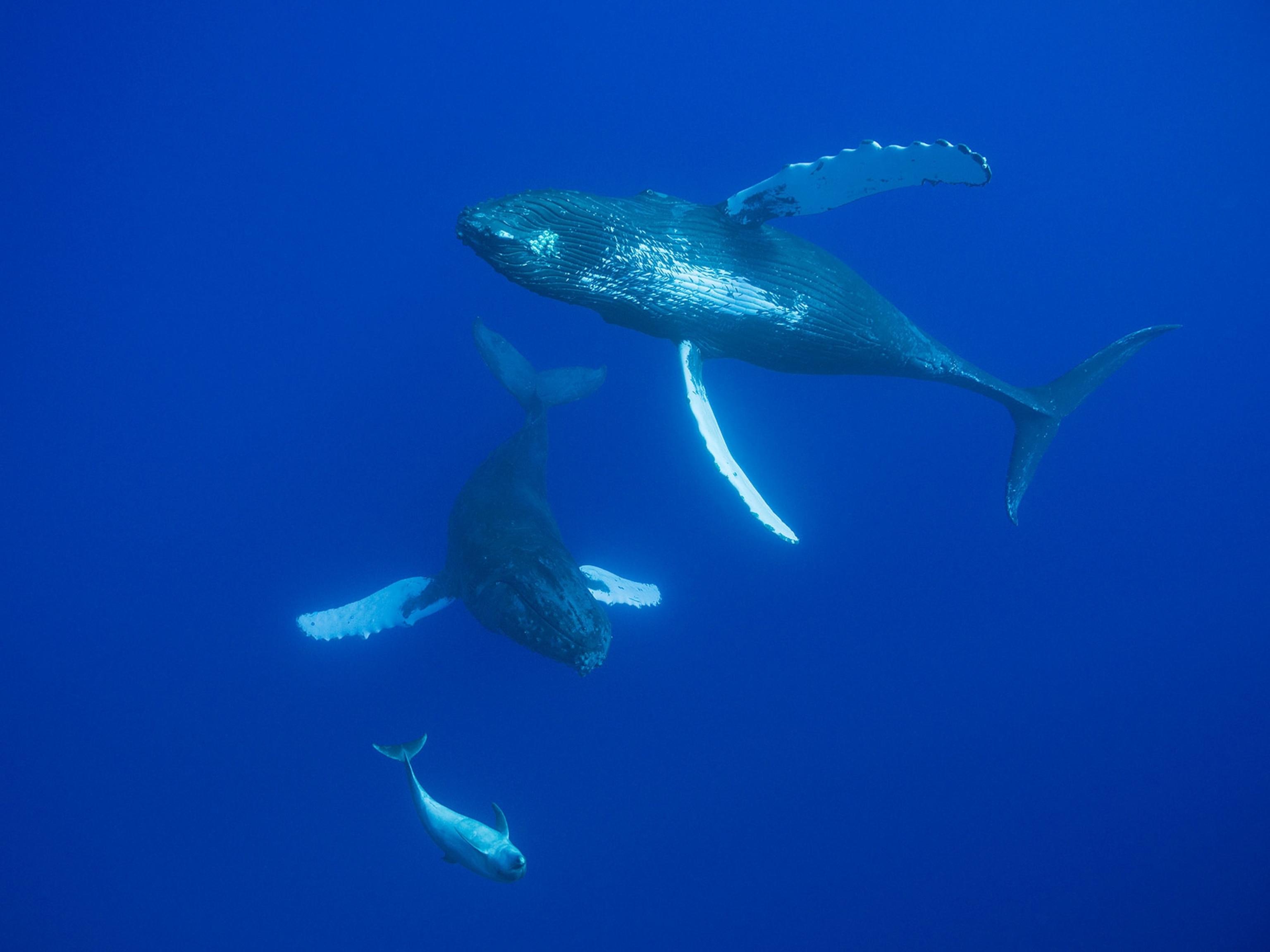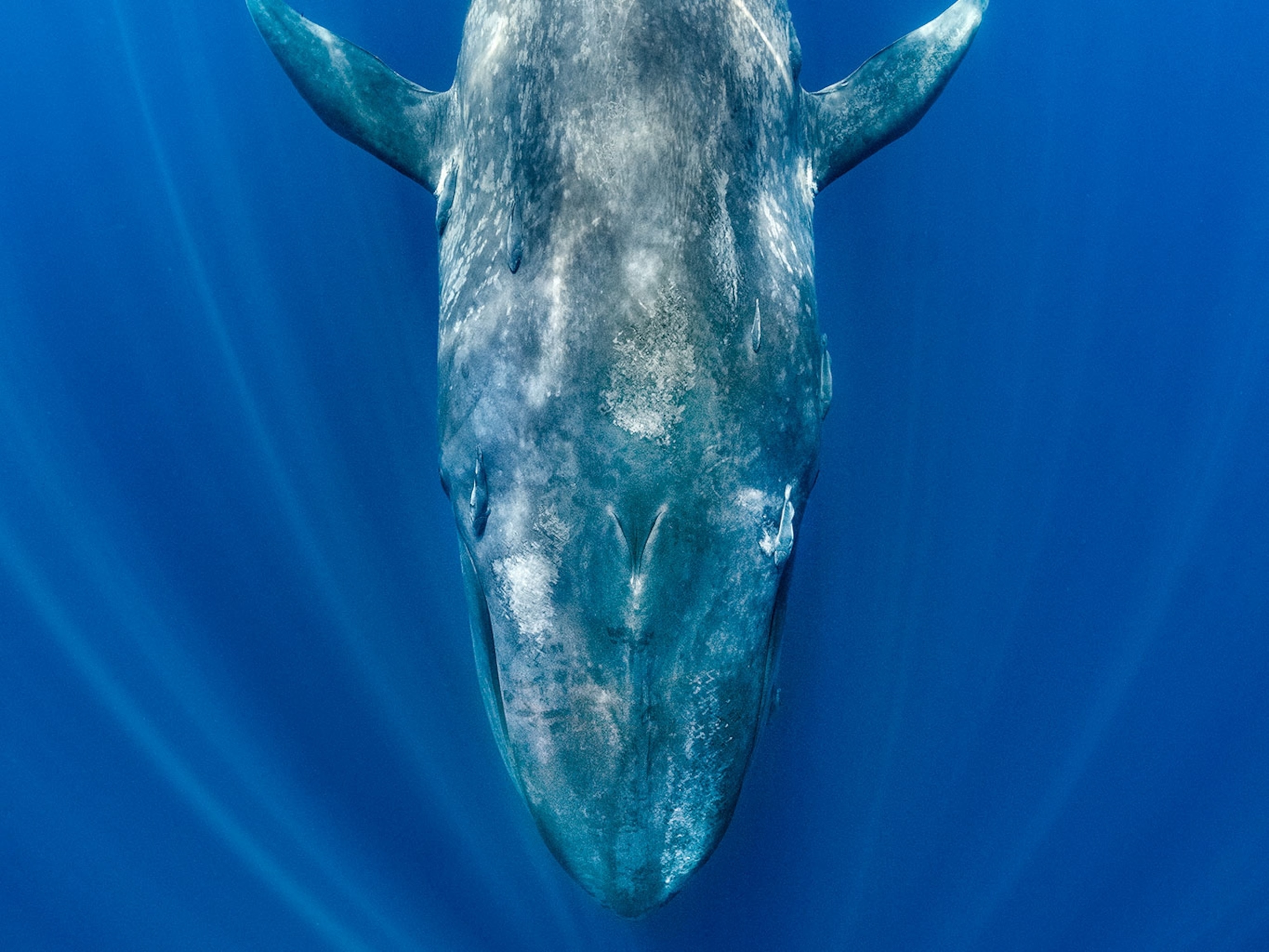
How Scientists Rescue Stranded Whales Like Those in the Everglades
Biologists use a range of techniques to help marine mammals in trouble.
When whales are in trouble anywhere in the United States, a network of volunteers and trained biologists springs into action. Scientists have more tools and techniques at their disposal than ever, but they are not always successful in saving marine mammals in peril.
This week, biologists have been working to save a pod of 41 pilot whales that are stranded in dangerously shallow water in Everglades National Park, in southern Florida. The whales are stuck in a remote, western part of the park near Highland Beach.
Related to dolphins, pilot whales live around the globe and are nearly as large as orcas. They are mostly dark gray, brown, or black but may have some lighter patches. The animals can reach a length up to 21 feet (6.5 meters) and a weight of 7,050 pounds (3,200 kilograms).
Blair Mase, coordinator for the National Oceanic and Atmospheric Administration's (NOAA) marine mammal stranding network, told the Christian Science Monitor that 51 pilot whales had first been reported stranded in the Everglades, though six of those animals were found dead and four others had to be euthanized Wednesday because they were suffering and unlikely to survive.
Although at least three of the now-deceased whales were reported on the actual beach, the surviving animals are said to be stuck in about three feet of water, about 75 feet (23 meters) off the beach. Biologists from NOAA and the National Park Service spent most of the day Wednesday trying to corral the whales to deeper water with boats, without success.
"We want to set the expectation low, because the challenges are very, very difficult," Mase told the Monitor.
Speaking from his office in Washington, D.C., Trevor Spradlin, a marine mammal biologist with NOAA's standing network, told National Geographic that the whales had been first reported by a group of fishermen. "We have a hotline number and there are well-established communication trees, so whenever someone sees a stranded marine mammal … eventually it winds up with us," said Spradlin. He added that a fisherman or a tourist on a beach will often call a local authority, such as a sheriff or a lifeguard, and then the news will make its way up a chain to NOAA. (See "Why Are Dolphins Dying on East Coast?")
Whale-Saving Network
The agency works with a network of professional biologists and volunteers across the country who are trained to respond to marine mammal strandings, through a program that was formalized by 1992 amendments to the federal Marine Mammal Protection Act. The network has a presence in all coastal states and reports to six regional coordinators and a national coordinator, who oversee the program and provide training and equipment.
In 2012, NOAA's network responded to more than 4,500 marine mammal strandings in the continental U.S., including Alaska. That number includes animals that were found dead, as well as animals found alive. Of the latter group, some were successfully pushed back out to sea, some were sent to rehab centers for treatment, and others were euthanized.
Spradlin said responders tend to see more stranded cetaceans (whales and dolphins) on the East Coast and more stranded pinnipeds (seals) on the West Coast. Many factors determine whether rescuers are successful in returning an animal alive to the water, said Spradlin, including the cause of the stranding in the first place, the animal's health and age, and environmental factors. Whales can get stuck in shallow water for a variety of reasons, including weakness from disease, hunger, or boat strikes; impacts of chemical or noise pollution; or social behavior.
Pilot whales are particularly at risk for group strandings, Spradlin said, because they are highly social animals that live in close-knit family groups, or pods. "Their need for group cohesion is very strong, so these animals stay together," said Spradlin. He added that scientists think a pod gets stranded after one animal first gets stuck, often an older or sick individual.
"The rest get caught up in tide fluctuations and they get lost, because they focus on being with the sick individual," said Spradlin. He added that such strong group cohesion can also be an asset to survival, because if the group can be freed, weaker individuals can receive protection and support from the stronger survivors.
Rescue Techniques
According to Spradlin, marine mammal rescuers rely on a range of techniques and technology, both of which have been improving over the past few decades. He added that working in marine environments faces the challenges of remote locations, corrosive saltwater, and fluctuations in weather and temperature.
But veterinary medicine for marine mammals in distress, in particular, is improving, said Spradlin. "The quality of care has improved significantly, and we've been able to train more people around the country to be responders, so we have a more robust network with better equipment," he said.
Spradlin said rescuers often use sound to try to move stranded marine mammals to deeper water. They often play back recordings of the animals' own calls, to try to lure them out. Or they play the sounds of their predators, to try to scare them away.
"Rescuers may bang on pipes, an old fisherman technique that puts sound in the water," added Spradlin. "It doesn't hurt them, but it can cause the animals to want to avoid the area."
Spradlin said biologists will also try to herd the animals out to sea with their boats, which he noted make sound and release bubbles.
If the animals are beached, the rescue attempt gets a lot harder. Depending on the animal's size and physical condition, people may try to move it into the water. "It's dependent on the availability of equipment, like heavy movers, slings, cranes, and things like that, and in remote areas it's almost impossible getting such equipment there in time," he said.
Healthy animals have a better chance of surviving a beaching. "Cetaceans are designed to live in water, so when they are stranded on a beach their internal organs aren't used to having that weight on them and they start getting crushed," said Spradlin. So when it comes to a rescue, "time is usually of the essence."
Volunteers are trained to keep stranded marine mammals cool and wet as long as possible, if moving equipment isn't immediately available. If the machinery doesn't arrive in time, or if the animal is severely compromised, "it's often best to euthanize it or it will have a very painful, slow death," said Spradlin.
Learning From Strandings
Spradlin stressed that NOAA and other scientists try to learn from each stranding that is reported.
The agency distributes tags through its network, with the goal of marking every animal that is successfully released. Electronic tags that beam information on the animal's whereabouts through satellites are preferred, Spradlin noted, although they aren't always available, so scientists may use a simple metal tag instead, often attached to a dorsal fin. "If they are seen later by a scientist or fisherman, they can report that the animal is ok," said Spradlin.
Animals that do perish are studied, with an eye toward better understanding the species and identifying the causes of its death.
Spradlin added, "Marine mammals are still fairly foreign to us. We know a lot more about terrestrial mammals, but marine mammals are so hard to study at sea."
When it comes to strandings, Spradlin said there can be many factors behind the problem. "If it is a human-caused situation, by pollution or things humans are doing to the marine environment, then those are things we have a responsibility to fix."
Follow Brian Clark Howard on Twitter and Google+.







